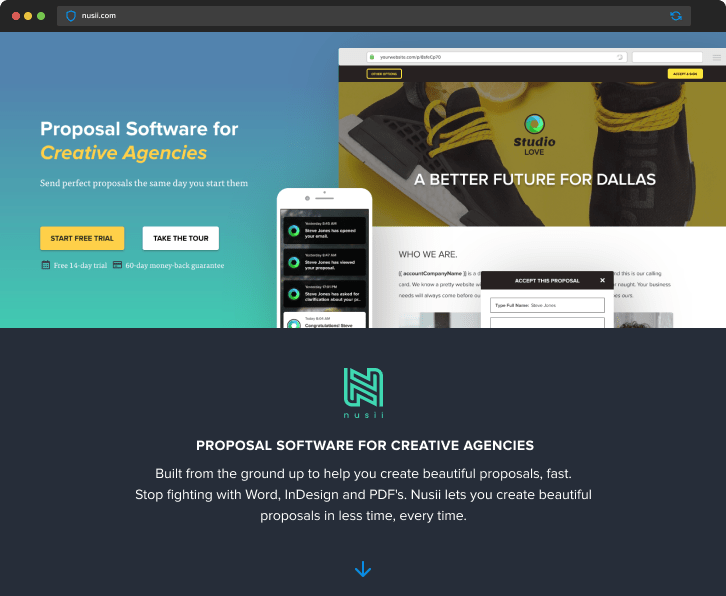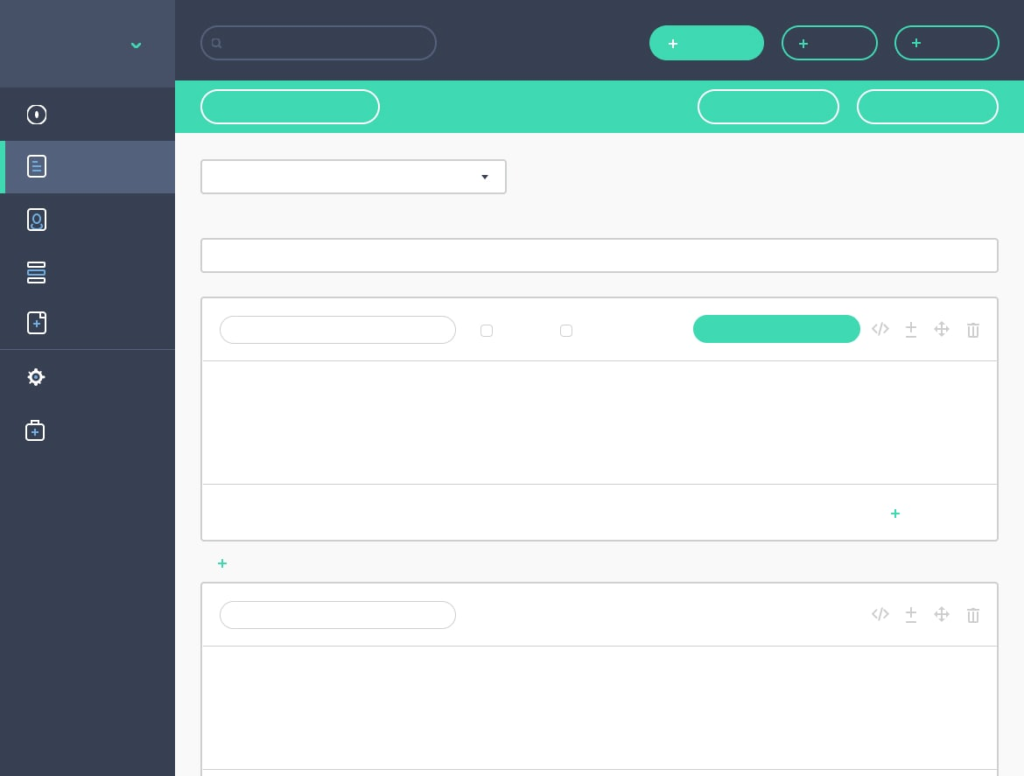Case study: Nusii
How a bootstrapped proposal SaaS got to compete


“From the start, simplicity was key for us, but simple isn’t as easy as it sounds. Nusii wouldn’t be what it is without Nathan’s expertise and dedication. Great UX is fundamental for any successful software. By working closely with customers and testing early and often, Nathan could iterate and successfully give our customers what they needed. If I had to start a new business, I would definitely be knocking on his door. I suggest you do, too.”
Michael Koper
Co-founder, Nusii Online Proposals
The challenge.
When you’re competing with established methodologies, the fight can be a tough one. Many creative agencies clung to Adobe Illustrator and InDesign as if their lives depended on it. “We want complete artistic control!” Which is a fair comment… However, my experience showed me that these traditional systems could take a few hours to several days to create and send a new proposal. A balance must be struck between efficiency and designed-by-hand-pixel-perfect-proposals (static and not trackable once sent).
The process.
The process was very organic with Nusii. Being part of the design community meant I had access to other creatives who felt similar pains with their proposal creation process.
Designing a system from the ground up meant a lot of sketches and user flows before getting near a laptop. Plenty of conversations with agencies made determining which elements were must-haves and which were nice-to-haves easier.
The initial version would be bare bones—something that would get the job done, period. An MVP was needed to get the ball rolling and start some real conversations… AKA, with paying customers. This was the initial goal I worked towards.

Problems and challenges.
The problem of competing against established systems.
For the longest time both freelancers and agencies have deferred to the good old PDF to create and distribute their client proposals. The primary challenge was demonstrating how much time could be saved with an online, trackable, and reusable proposal template system.
The problem of not having a “name.“
Getting your product in front of people can be tough when you aren’t internet-famous. If you know about the world of Bootstrapped products, you’ve probably heard the phrase Audience First. And while I did have a small following, I was no Jason Fried (Basecamp co-founder).
The problem of financial limitations.
In an ideal world, a UX designer would ideate and iterate until the cows came home. In the real world, this is seldom the case. Given that this was (initially) a solo venture, I had to place some hard limits on myself. The limit I chose was financial. I had set aside a sum of money to develop the MVP. If it failed to attract paying customers, I would cut my losses and say I tried.
Project expectations.
Expectations on a personal project are difficult to measure accurately. You’re both skeptical and optimistic in equal share. You want it to be a huge success, but at the same time, doubt it will get even one customer.
At its core, my expectations were to complete the MVP and get it live. After that, anything was a win.
In the images below, you can see a couple of early concepts.


Understanding online proposals
Personas or real-life testers?
Belonging to my target market allowed me to make assumptions I could later test with real-world agencies. I have always found it preferable to work with feedback from flesh-and-blood folks rather than personas. If the opportunity exists, I will always go for real-world data and testing.
The iterative process.
I was lucky to see Nusii from its beginnings until I sold it. This meant I could enjoy the iterative process from beginning to end…and many iterations and improvements were made over time. Once Nusii became an established SaaS, the only limitation was development. Below are some of the iterations that Nusii went through.
As a side note, I previously mentioned how I had access to real-world testers from the beginning. It bears mentioning that it was through working with Nusii that I really learned the value of customer interviews, research, and the absolute gold that can be dug up during real-life conversations with users/testers.






Results and final thoughts.
When working for a third party the question, “Has this been a successful project?” is a different question to when you are your own boss.
Nusii was my first serious venture into software design and my first foray into entrepreneurship (other than writing a book on design sometime earlier). It became my passion, joy, and main income for several years before selling to my co-founder.
What you learn by building your own software outweighs any course, client project, or university degree you might obtain. Designing software is always challenging, but when it is used by agencies in over 60 countries, you learn a lot about yourself, how you communicate with others, and how to deal with solicited and unsolicited feedback 😊.

Your dedicated UX studio without the studio salary.
The average salary for a product designer in the United States is between $75,000 and $119,000. Not everyone can commit to such numbers.
Beyond the Pixel makes UX accessible to growing SaaS businesses without the commitment or cost of a full-time employee.